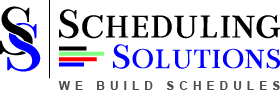
A well-structured work program is the foundation of any successful project. Whether it’s in construction, engineering, software development, or infrastructure, a work program lays out the roadmap of how project tasks will be executed, monitored, and delivered. It ensures that every stakeholder is aligned on responsibilities, timelines, and resource allocation. A clear and detailed work program minimizes confusion, helps manage time and budget, and ensures that project objectives are met within the agreed scope.
What is a Work Program?
A work program is a structured plan that outlines all the activities, tasks, milestones, resources, and timelines required to complete a project. It serves as a guiding document that aligns team members and helps project managers monitor progress throughout the project lifecycle.
This document is essential in defining the sequence of tasks, identifying critical paths, and ensuring that dependencies are clearly mapped out. In more technical terms, a work program is often tied to scheduling tools and techniques such as Gantt charts, bar charts, and network diagrams.
Key Elements of a Work Program
A detailed work program typically includes the following components:
- Task Breakdown: The project is divided into manageable activities or work packages.
- Timeline: Each task is assigned a start and end date.
- Dependencies: Links between tasks to show the sequence of execution.
- Resources: Allocation of labor, equipment, and materials.
- Milestones: Key checkpoints to measure progress.
- Deliverables: Clear outputs defined for each phase or stage.
These elements help in creating a clear structure that can be easily followed and adjusted if necessary.
Why a Work Program is Crucial
1. Improves Planning and Coordination
A work program enables effective planning by outlining every task involved in a project. It serves as a communication tool between project managers, stakeholders, contractors, and clients. With a shared reference point, all parties can remain aligned and address issues collaboratively.
2. Enhances Time Management
Time is one of the most critical resources in project execution. A work program ensures that tasks are completed within set deadlines and provides visibility into potential delays. With clearly defined timeframes, it becomes easier to track project status and make timely adjustments.
3. Budget Control
When tasks, resources, and time are mapped out in a work program, it becomes easier to estimate costs and manage the project budget. It also helps prevent cost overruns by identifying where resources are being overused or where tasks are lagging.
4. Risk Mitigation
Every project has risks, but a detailed work program allows managers to anticipate and respond to issues before they escalate. By planning ahead and setting realistic timelines, potential delays or conflicts can be minimized or avoided altogether.
5. Performance Tracking
A work program enables continuous performance evaluation. Project teams can compare actual progress with planned progress and determine whether corrective actions are needed. This helps maintain momentum and ensures accountability.
How to Develop a Work Program
Step 1: Define Project Scope
Start by clearly understanding what the project aims to deliver. Identify all activities required to complete the scope.
Step 2: Break Down Tasks
Decompose the project into smaller tasks or work packages. Each task should be specific and measurable.
Step 3: Determine Sequence
Establish logical sequences and dependencies between tasks. Use techniques like the Critical Path Method (CPM) to identify the most time-sensitive activities.
Step 4: Allocate Resources
Assign appropriate labor, equipment, and materials to each task. Ensure that resource availability is considered during scheduling.
Step 5: Set Timeframes
Assign start and end dates to each task based on priority and resource availability. Use project management software to visualize the timeline.
Step 6: Add Milestones and Deliverables
Include key milestones for project evaluation and define deliverables for each stage to ensure quality and completion.
Step 7: Review and Approve
Before implementation, review the entire work program with stakeholders to ensure everything aligns with project goals and expectations.
Tools Commonly Used
While a work program can be drafted manually, most professionals use project management tools to streamline the process. These include:
- Microsoft Project
- Primavera P6
- Excel-based Gantt charts
- Online tools like Trello, Asana, or Monday.com (for simpler projects)
These tools help automate task scheduling, resource allocation, and performance tracking, reducing administrative workload.
Challenges in Work Program Implementation
Despite its benefits, implementing a work program can come with challenges, such as:
- Inaccurate time estimation
- Unavailable or overbooked resources
- Lack of stakeholder commitment
- Unexpected changes in scope or external factors
To overcome these, it’s essential to regularly update the work program, hold progress meetings, and maintain transparent communication among all parties.
Conclusion
A comprehensive work program is more than just a schedule—it’s a strategic document that shapes the direction of an entire project. By investing time in planning and organizing tasks through a well-defined program, project managers can improve execution, control costs, and ensure timely delivery. Whether the project is large or small, a clear work program ensures better decision-making, enhanced accountability, and overall project success.



